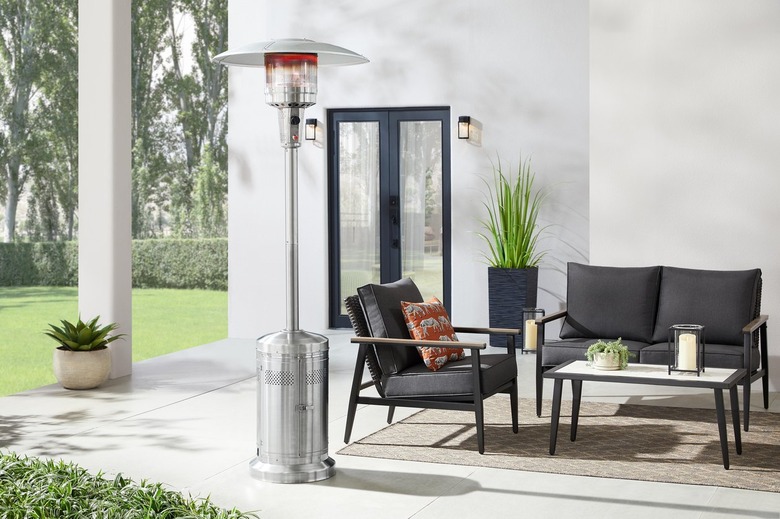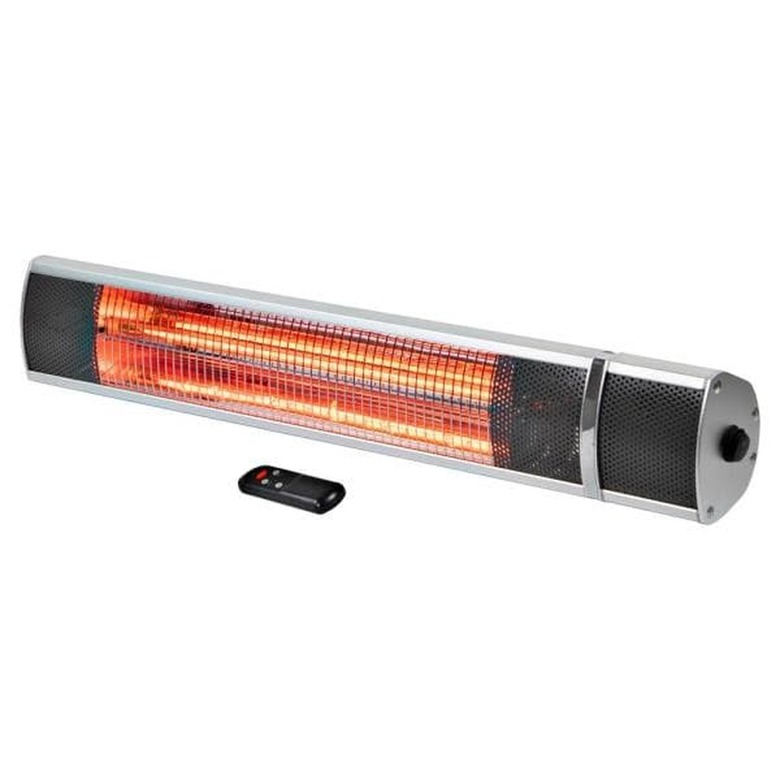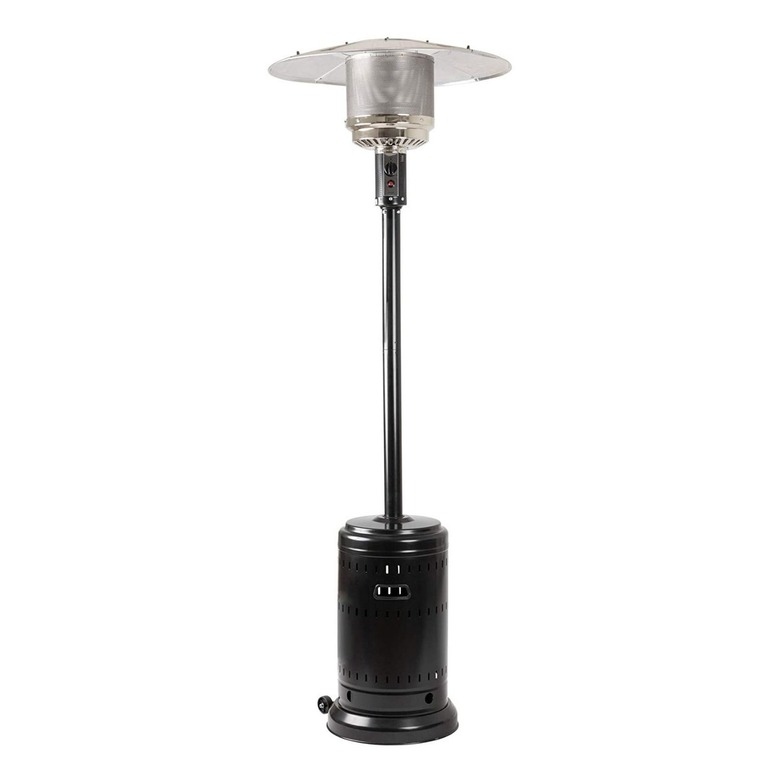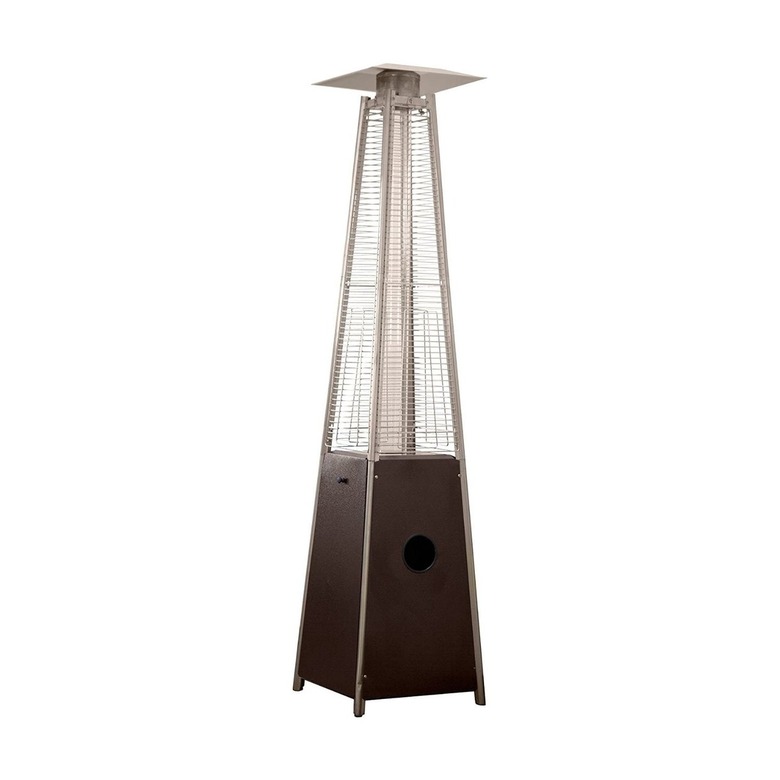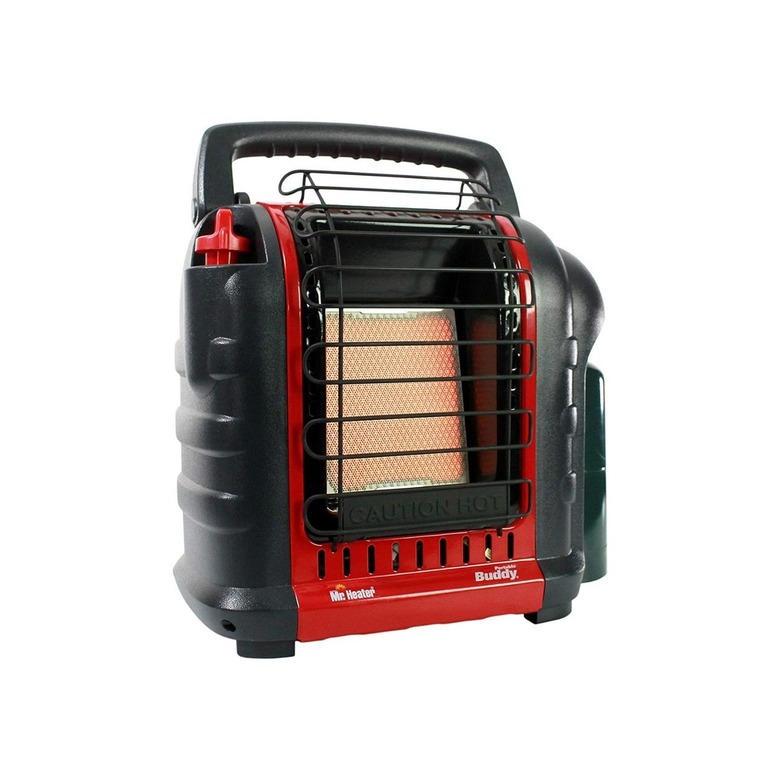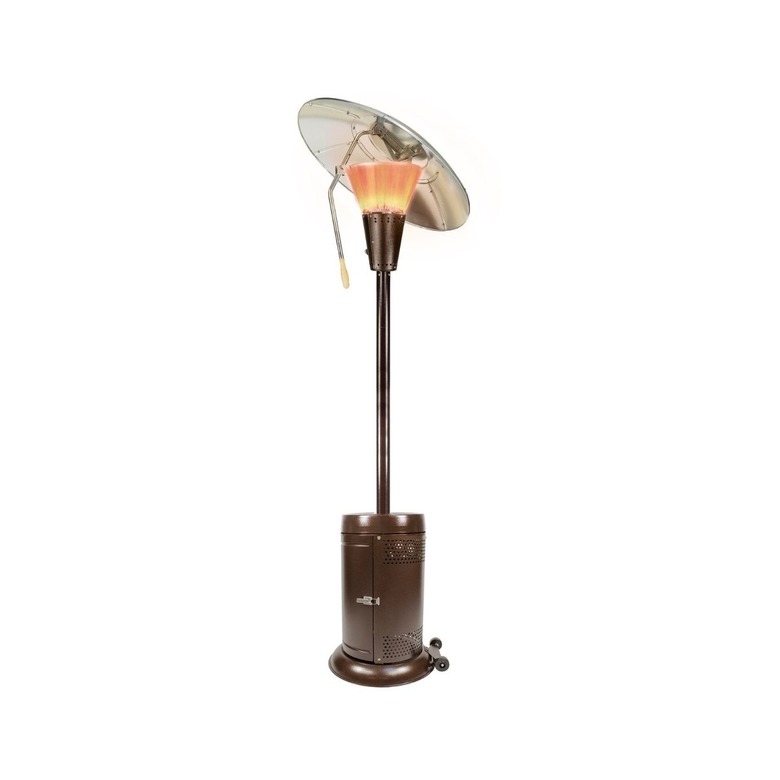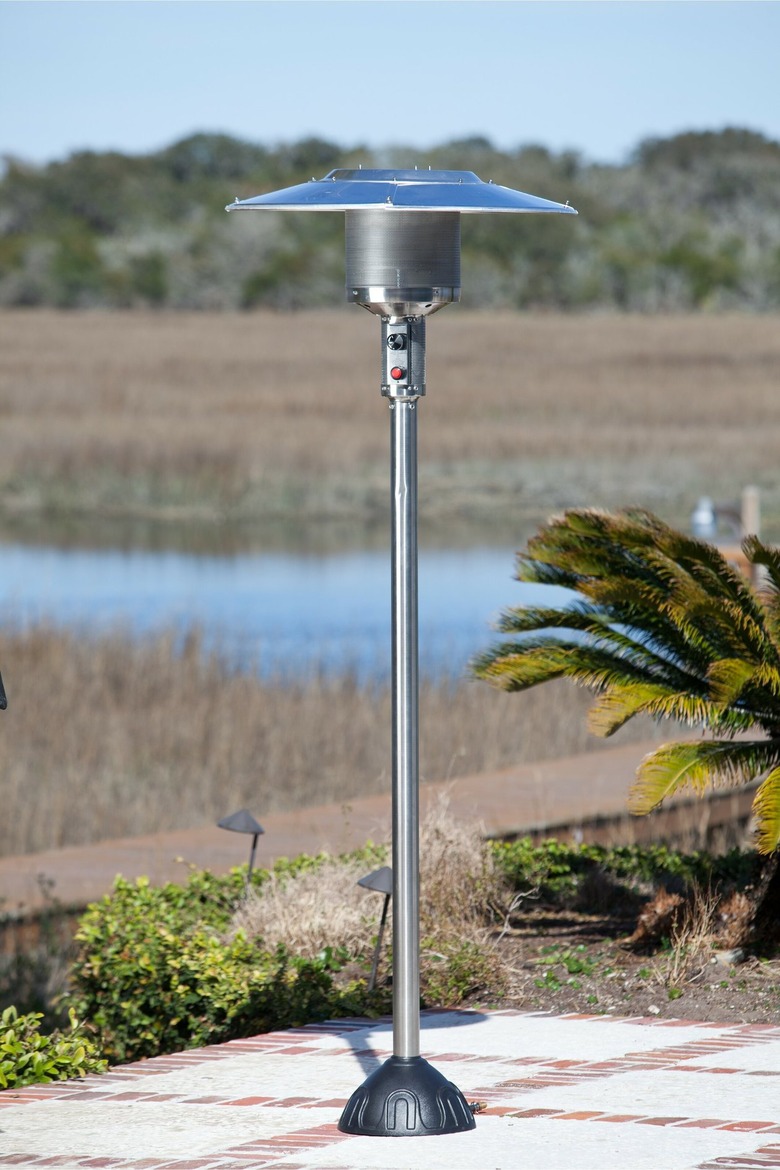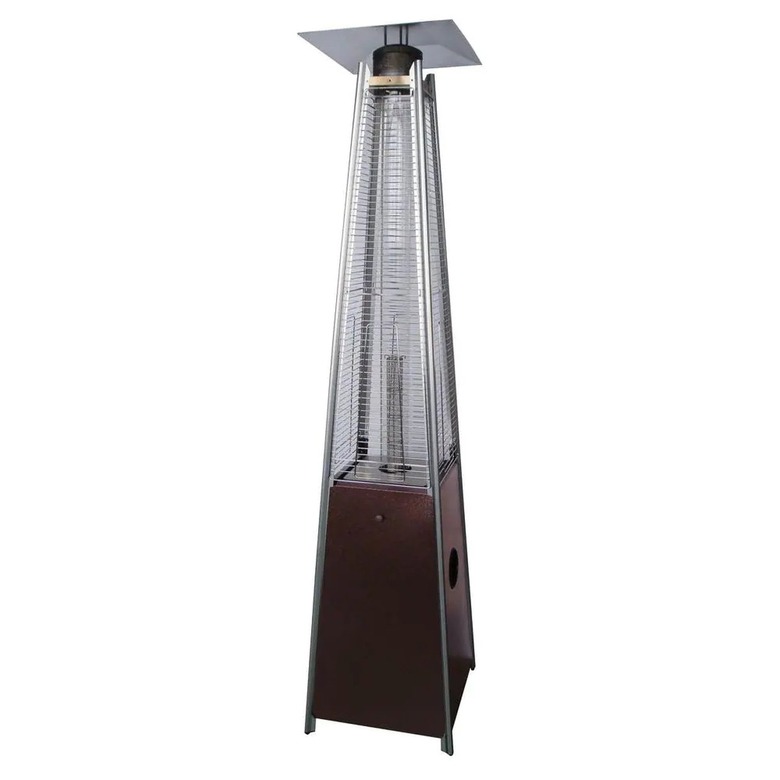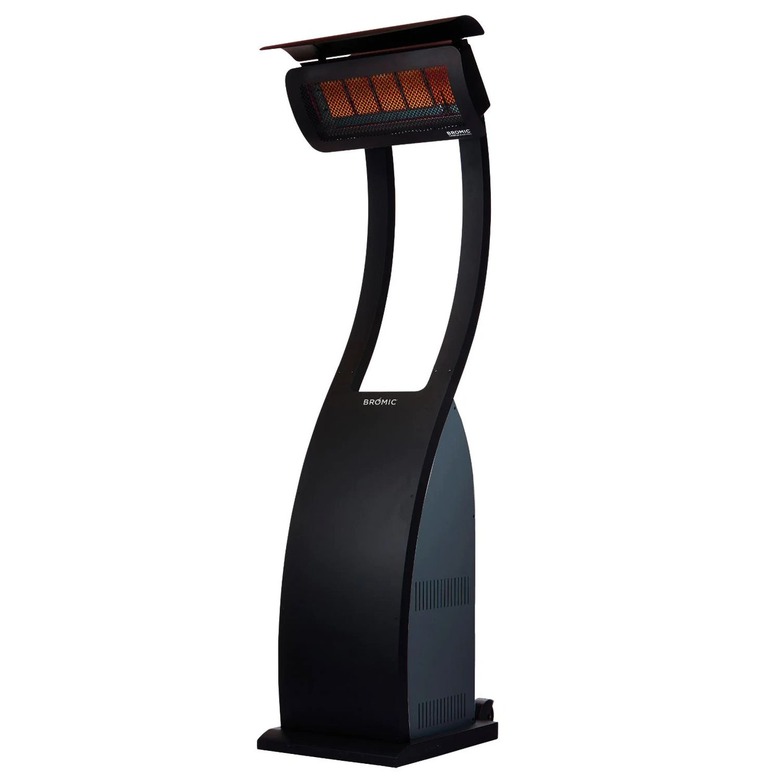The 8 Best Patio Heaters For Warming Your Space
We may receive a commission on purchases made from links.
There's nothing like getting to kick back and enjoy your outdoor space, but once the temperature drops, it's time to bring in some reinforcements. Patio heaters (along with toasty fire pits, if you have the space) are the perfect way to enjoy outdoor entertaining all year long. To help you find the best patio heater for you, we got the inside scoop on everything you need to know about these handy outdoor heaters from Justin Elkins, associate merchant for outdoor fire at The Home Depot.
Types of Patio Heaters
Types of Patio Heaters
There are all sorts of outdoor patio heaters on the market, but you'll typically find that their heat sources are from natural gas, propane, or electric.
Natural Gas
Natural gas patio heaters tend to be more permanent options since they connect to a gas line. Therefore, they're ideal for homeowners and might not be the best choice for renters. They're usually more costly, too. "Patio heaters fueled by natural gas are often pricier than electric versions, but the long-term ownership costs are considerably less, and they're easier to maintain," Elkins says. However, the payoff is that they offer continuous heat for as long as you want.
Propane
Propane patio heaters are more portable and convenient than natural gas options since they don't have to be connected to a gas line. But they do require propane tanks. "These heaters usually feature a basic shape and a larger base that houses the LPG (liquefied petroleum gas) tank," Elkins tells Hunker. "The LPG tank connects to removable propane tanks, which must be purchased separately as needed."
Electric
Last but not least are electric patio heaters. According to Elkins, these heaters are not only efficient, but they're also portable. They can be broken down into two categories, either utilizing energy through infrared rays or halogen bulbs. "Both categories quickly and efficiently warm your outdoor space without using excess electricity," Elkins says. Electric options are great for smaller patios since they don't generate as much heat as other types.
Styles of Patio Heaters
Styles of Patio Heaters
Along with different heat sources, there are several styles of patio heaters to choose from, including standing, tabletop, hanging, and mounted.
Standing
Standing outdoor heaters come in all shapes and sizes and can be moved around with ease. They are available in all three types of heat sources — propane, electric, and natural gas. But when it comes to standing natural gas patio heaters, make sure you have a "larger and more open outdoor [area] so the fumes have space to safely dissipate," Elkins advises.
Tabletop
Host a lot of outdoor dinners? Try tabletop patio heaters, which typically run off propane. They're portable, compact, and perfect for smaller surfaces, like outdoor dining tables and patio sets.
Hanging
Hanging patio heaters typically use either electricity or natural gas and are ideal if you're looking for overhead heating for small patios or gazebos.
Mounted
Mounted patio heaters typically use an electric heat source and can be mounted on your wall or umbrella. If you have patio seating, electric heaters can be attached to your umbrella pole. But if you want a wall-mounted patio heater, you'll have to attach it using a bracket mount on either your deck or the side of your home, Elkins says.
How to Choose a Patio Heater
How to Choose a Patio Heater
According to Elkins, there are two main questions to ask yourself when shopping for a patio heater: What is the area that you are looking to heat? And what type of fuel will you use? It's also important to consider how big or small your patio is, as that will determine the BTUs (British Thermal Units) required to heat the space. When you're looking for patio heaters, you can sort your search based on BTUs. However, when it comes to electric options, the heat is measured in watts.
Depending on your space, you may need more than one unit. "One patio heater is probably enough to heat 1,500 to 2,000 square feet of covered space," Elkins says. "In an uncovered space, expect a freestanding patio heater to warm a 20-foot diameter space."
As for overall features to look for when comparing patio heaters for your space, consider the power source, range and space size, heat level, and style.
Where to Put Your Patio Heater
Where to Put Your Patio Heater
According to Elkins, patio heaters should not be positioned too close to walls, patio furniture, or other flammable objects. As a rule of thumb, make sure there's at least three feet of space on all sides of the heater to be safe.
How to Maintain Your Patio Heater
How to Maintain Your Patio Heater
One of the best ways to maintain your patio heater is to buy a cover for it. "It will keep bugs, dirt, and debris from blowing into the heating element, which can clog it or create a fire risk," Elkins says.
Safety Precautions
Safety Precautions
Since they generate heat, there are a few things to keep in mind when working with patio heaters.
If you have a covered patio, opt for natural gas or electric heaters rather than propane options. "Don't use propane heaters due to the risk of carbon monoxide buildup in an enclosed area, such as a greenhouse or enclosed patio, unless a safety feature is built into the unit," Elkins says.
Additionally, Elkins recommends positioning patio heaters on leveled spots so they don't tip over, keeping a fire extinguisher close by, and not leaving them running unattended.
8 Best Patio Heaters for Warming Your Space
1. Comfort Zone 1,500-Watt Indoor/Outdoor Metal Electric Patio Heater with Remote Control, $88.61
Make outdoor heating a breeze with this electric patio heater. It's more affordable than other heater options and comes with a remote control so you can adjust its three heat settings from a distance. This heater is also waterproof and can be used all year round. Plus, it can be mounted on a wall or stand, depending on your needs.
2. Amazon Basics 46,000 BTU Outdoor Propane Patio Heater With Wheels, $175.99
This patio heater from Amazon can provide heat for up to a 9-foot radius. It uses an electric piezo ignition system and starts up with the push of a button, plus it has a safety auto shut-off tilt valve and weighted base for added support. Not only can it be used for homes, but it's also ideal for commercial use in cafes and restaurants.
3. Hiland 40,000 BTU Pyramid Patio Propane Heater With Wheels, $284.99
Cozy up outdoors with this pyramid patio heater by Hiland. It uses a standard 20-pound propane tank that can last between eight to 12 hours. It also features a quartz glass tube for an extra touch of style.
4. Mr. Heater Buddy 4,000-9,000-BTU Indoor-Safe Portable Propane Radiant Heater, $90.84
This portable patio heater is perfect for all sorts of outdoor use, including tailgating, camping, or hanging out on the patio. With 4,000 to 9,000 BTUs of heat, it can warm up around 225 square feet of space. It also has auto shut-off if it tips over, if the pilot light goes out, or if oxygen levels are low.
5. Hampton Bay 38,200 BTU Bronze Heat-Focusing Propane Gas Patio Heater, $199
Heat up to 120 square feet of space with this propane patio heater by Hampton Bay. It has cone-shaped burners that reflect and evenly distribute heat to keep you toasty during all your outdoor dinner parties. It also has safety features like an anti-tilt design and flame failure cut-off switch.
6. Fire Sense 45,000 BTU Stainless Steel Natural Gas Patio Heater, $282
In need of heat all year long? Try this stainless steel, natural gas patio heater from Walmart. Since it's connected to a gas line, you won't need to worry about swapping out propane tanks. This patio heater generates 45,000 BTUs of heat and uses a one-touch spark-ignition button.
7. AZ Patio Heaters 40,000 BTU Quartz Glass Tube Hammered Bronze Pyramid Propane Patio Heater, $306.67
Go for a design-forward option with this pyramid-style propane patio heater. Not only does it give off 40,000 BTU of heat, but it also has a dancing flame that you'll want to watch all night long. This patio heater features wheels for easy mobility.
8. Bromic Heating Tungsten Smart-Heat 38,500 BTU Propane Gas Freestanding Portable Patio Heater, $1,988
If you have money to spend, try this luxury option that uses infrared heat on areas up to 200 square feet. Using a one-touch ignition to start, it distributes heat evenly and has a flame failure and tilt safety technology for safe usage. It also has a mesh screen that makes it resistant to winds up to nine miles per hour.
